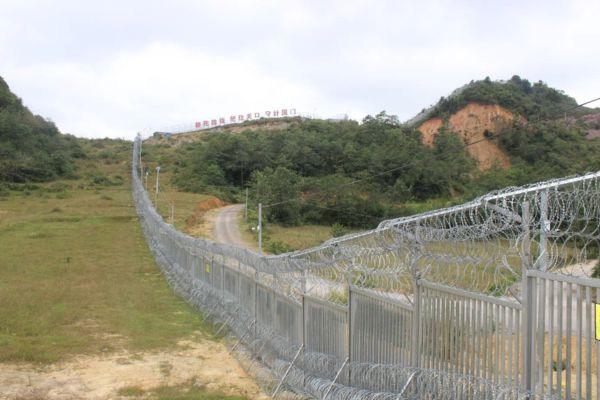Pilot Implementation of Intelligent Border Gate System at Vietnam - China Border in 2023: How Will It Be?
How is the pilot application of the smart border gate system at the Vietnam-China border in 2023?
Pursuant to the provisions of point a, Sub-section 1, Section III of Resolution 105/ND-CP in 2023, the key tasks and solutions are specified as follows:
KEY TASKS AND SOLUTIONS
1. Promote domestic consumption and boost exports
a) The Ministry of Industry and Trade shall take the lead, in cooperation with ministries, agencies, and localities:
...
- Coordinate with Ministries, sectors, and localities to enhance efficiency and regulate well to expedite the clearance of import and export goods at the Vietnam - China border gates; cooperate with the Ministry of Agriculture and Rural Development in negotiating with China to open more export markets for other Vietnamese agricultural products.
- Focus on completing negotiations, striving to pilot the application of the smart border gate system at the Vietnam-China border in 2023.
Thus, one of the key tasks for solutions to remove difficulties for production and business, and to continue to promote administrative procedure reform, and tighten discipline is to focus on completing negotiations, striving to pilot the application of the smart border gate system at the Vietnam-China border in 2023.
This task is assigned to the Ministry of Industry and Trade to lead, in cooperation with ministries, agencies, and localities.

*Pilot application of the smart border gate system at the Vietnam-China border in 2023? (Image from the Internet)*
What is considered a border area?
Pursuant to the provisions of Article 6 of the National Border Law 2003, the border area is specified as follows:
The border area includes:
1. The land border area includes communes, wards, and commune-level towns that have part of their administrative boundaries coinciding with the land national border;
2. The sea border area is calculated from the sea national border to the end of the administrative boundary of seaside communes, wards, and commune-level towns and islands, archipelagos;
3. The air border area includes the airspace along the national border with a width of ten kilometers calculated from the national border inward.
Thus, the current border of Vietnam is divided into 3 areas as follows:
- The land border area includes communes, wards, and commune-level towns that have part of their administrative boundaries coinciding with the land national border;
- The sea border area is calculated from the sea national border to the end of the administrative boundary of seaside communes, wards, and commune-level towns and islands, archipelagos;
- The air border area includes the airspace along the national border with a width of ten kilometers calculated from the national border inward.
What are the principles for passing through border gates?
Pursuant to the provisions of Article 5 of Decree 112/2014/ND-CP, the principles for passing through border gates are specified as follows:
Principles for passing through border gates
1. People, vehicles, goods, and items passing through border gates must have all valid documents, comply with the principles and procedures as prescribed for exit, entry, export, and import, and other regulations of Vietnamese law and international treaties to which the Socialist Republic of Vietnam is a member; subject to the management, inspection, control, and supervision by specialized state management agencies at the border gates.
2. People, vehicles, goods not belonging to the border residents of both sides passing through the border openings shall implement border trade policies according to the Prime Minister's regulations.
3. Border crossing activities for people, vehicles, goods, and items of Vietnam and foreign countries shall only be conducted at border gates and border openings as specified in Article 4 of this Decree.
Thus, the principles for passing through border gates are specified as follows:
- People, vehicles, goods, and items passing through border gates must have all valid documents, comply with the principles and procedures as prescribed for exit, entry, export, and import, and other regulations of Vietnamese law and international treaties to which the Socialist Republic of Vietnam is a member; subject to the management, inspection, control, and supervision by specialized state management agencies at the border gates.
- People, vehicles, goods not belonging to the border residents of both sides passing through the border openings shall implement border trade policies according to the Prime Minister's regulations.
- Border crossing activities for people, vehicles, goods, and items of Vietnam and foreign countries shall only be conducted at border gates and border openings as specified.
LawNet